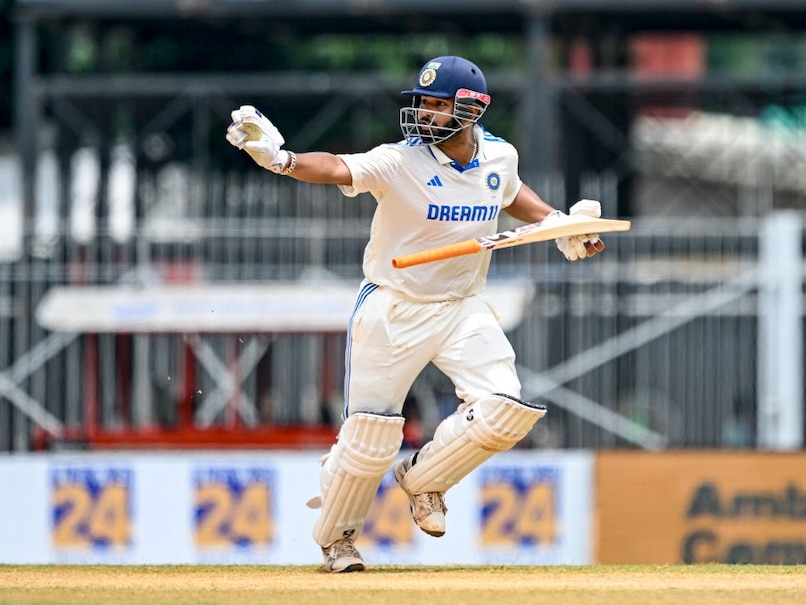Impact on India-Bangladesh Test Match
Cricket enthusiasts around the world were left stunned when news broke about potential safety hazards at the Shere Bangla National Stadium in Mirpur, Bangladesh. As the second Test match between India and Bangladesh approached, reports emerged suggesting that a section of the stadium might be at risk of collapse. Let’s dive deep into this concerning situation and explore its implications for players, fans, and the future of cricket infrastructure.
The Structural Dilemma at Mirpur Stadium
The heart of the issue lies in the Grand Stand of the Mirpur Stadium. According to reports from local media, particularly the Bengali daily ‘Prothom Alo’, there are serious concerns about the stand’s stability. The most alarming claim suggests that the stand could potentially collapse if a batsman, specifically mentioning Rishabh Pant, were to hit a six in that direction.
This revelation has sent shockwaves through the cricketing community, raising questions about:
1. The overall safety of cricket stadiums
2. The responsibility of cricket boards in maintaining infrastructure
3. The potential risks faced by players and spectators
Understanding the Severity of the Situation
To grasp the gravity of these safety concerns, it’s crucial to consider several factors:
Age and Maintenance of the Stadium
The Shere Bangla National Stadium, opened in 2006, has been a cornerstone of Bangladesh cricket for nearly two decades. However, like any structure, it requires regular maintenance and upgrades. The current situation raises questions about the frequency and quality of structural assessments carried out at the venue.
Impact on Player Performance
Knowing that a section of the stadium might be unstable could significantly affect players’ mindsets. Batsmen, in particular, might feel hesitant to play big shots, potentially altering match dynamics and strategies.
Spectator Safety Concerns
While the focus has been on player safety, we must not overlook the thousands of fans who attend matches. Their safety is paramount, and any risk to spectators could have severe consequences for the sport’s popularity and the stadium’s future.
Reactions from Cricket Authorities and Players
The Bangladesh Cricket Board (BCB) and the Board of Control for Cricket in India (BCCI) have been thrust into the spotlight following these revelations. Their responses and actions will be crucial in addressing the situation and ensuring the safety of all involved.
BCB’s Response
As of now, the BCB has not issued an official statement regarding the structural concerns. Cricket fans and experts alike are eagerly awaiting their response and plan of action.
BCCI and Indian Team’s Stance
The Indian cricket team, led by KL Rahul in the absence of Rohit Sharma, is likely to be in close communication with the BCCI regarding these safety concerns. Any decision to proceed with or postpone the match will undoubtedly involve extensive discussions between both cricket boards.
The Broader Implications for Cricket Infrastructure
This incident at Mirpur Stadium opens up a larger conversation about cricket infrastructure globally:
1. Need for Regular Audits: The importance of conducting regular structural audits of cricket stadiums cannot be overstated. This incident serves as a wake-up call for cricket boards worldwide to prioritize infrastructure maintenance.
2. Modernizing Older Venues: Many iconic cricket stadiums around the world are decades old. This situation highlights the need for continuous modernization and upgrades to ensure they meet current safety standards.
3. Balancing Tradition with Safety: While preserving the historical significance of older stadiums is important, it should never come at the cost of safety. Cricket authorities must find ways to maintain the charm of traditional venues while ensuring they are structurally sound.
The Way Forward: Ensuring Safe Cricket Environments
As we await further developments in the Mirpur Stadium situation, it’s essential to consider proactive steps to prevent similar issues in the future:
1. Implement Stringent Safety Protocols: Cricket boards should establish and enforce strict safety guidelines for all international and domestic venues.
2. Invest in Cutting-Edge Technology: Utilizing advanced structural analysis tools can help identify potential issues before they become critical.
3. Transparent Communication: Cricket authorities should maintain open lines of communication with players, fans, and media regarding stadium safety measures.
4. Emergency Preparedness: Stadiums should have clear evacuation plans and regularly conduct safety drills to ensure preparedness for any eventuality.
The Role of Players and Fans
While the onus of stadium safety primarily lies with cricket boards and local authorities, players and fans also have a role to play:
1. Players should feel empowered to voice concerns about playing conditions and venue safety.
2. Fans should remain vigilant and report any observable structural issues to stadium authorities.
Conclusion: A Wake-Up Call for Cricket Infrastructure
The safety concerns at Mirpur Stadium serve as a stark reminder of the importance of maintaining and upgrading cricket infrastructure. As the cricketing world eagerly awaits updates on this situation, it’s clear that this incident will have far-reaching implications for how stadium safety is approached in the future.
Moving forward, it’s crucial for all stakeholders in the cricket community to work together to ensure that the thrill of the game never comes at the cost of safety. Only through collective effort can we ensure that cricket stadiums remain safe havens for players and fans alike, allowing the beautiful game to flourish for generations to come.
Internal Linking Opportunities:
1. “History of Shere Bangla National Stadium”
2. “Top 10 Cricket Stadiums in Asia”
3. “Cricket Infrastructure Development in Emerging Nations”
External Sources:
1. International Cricket Council (ICC) – Stadium Safety Guidelines: https://www.icc-cricket.com/about/cricket/rules-and-regulations/stadium-safety
2. Engineering News-Record – Stadium Structural Safety: https://www.enr.com/topics/604-stadium-construction
3. Journal of Performance of Constructed Facilities – Structural Health Monitoring of Sports Stadiums: https://ascelibrary.org/journal/jpcfev
4. World Stadium Congress – Future of Stadium Design: https://www.worldstadiumcongress.com/
5. Sports Management Degree Hub – Stadium Safety and Security: https://www.sportsmanagementdegreehub.com/stadium-safety-security/













